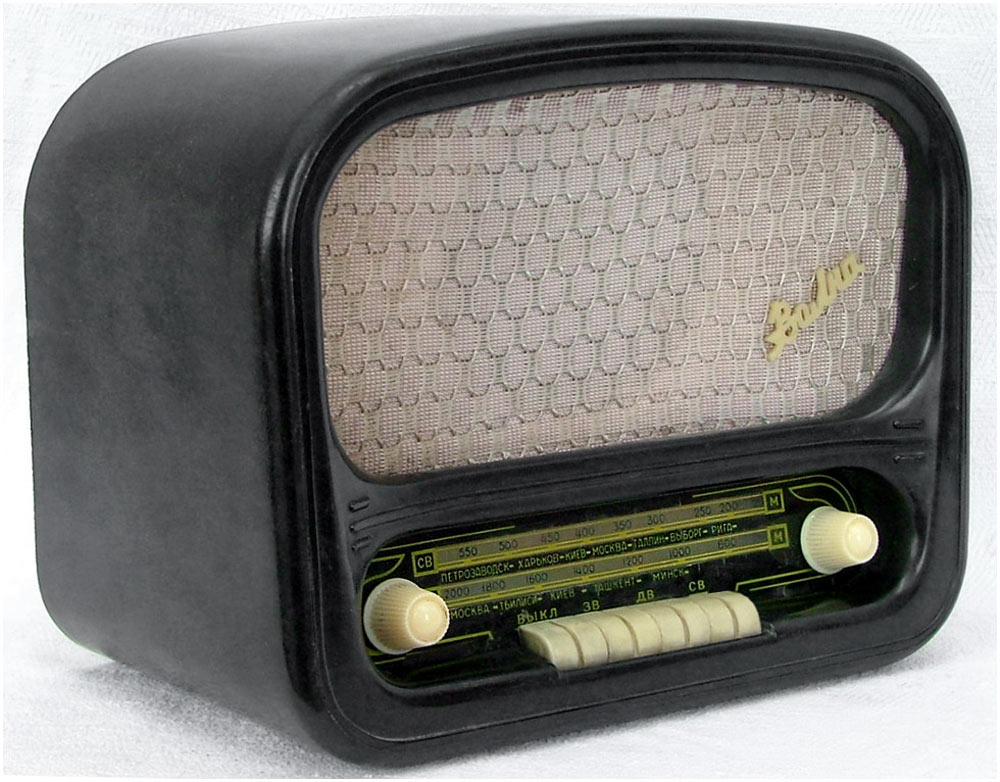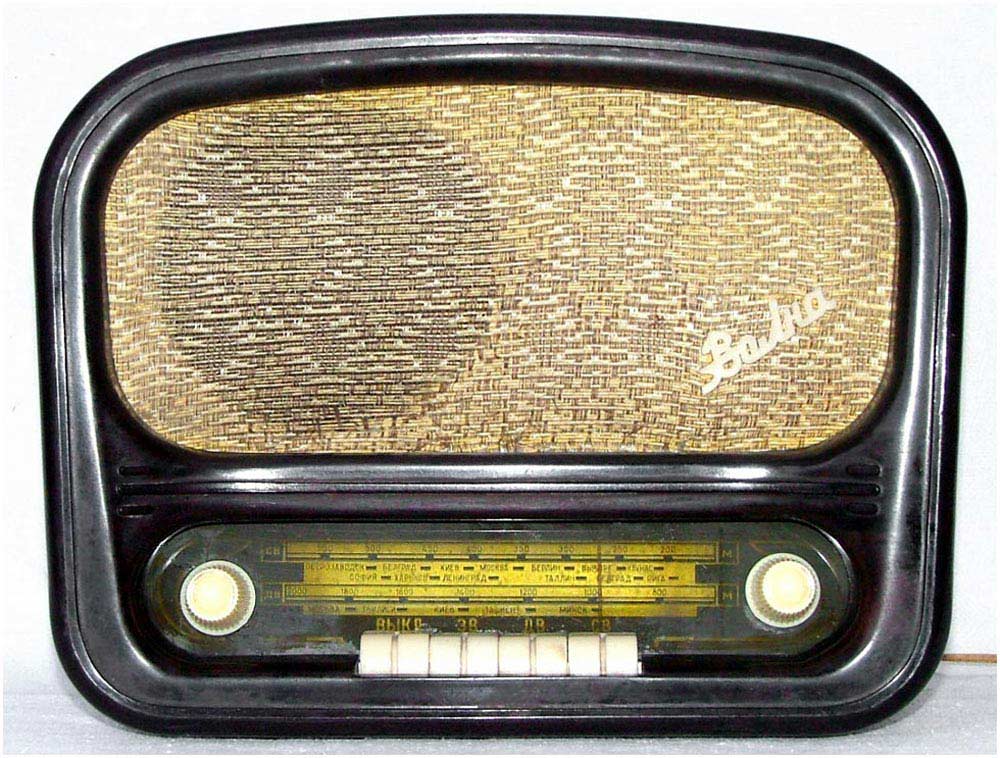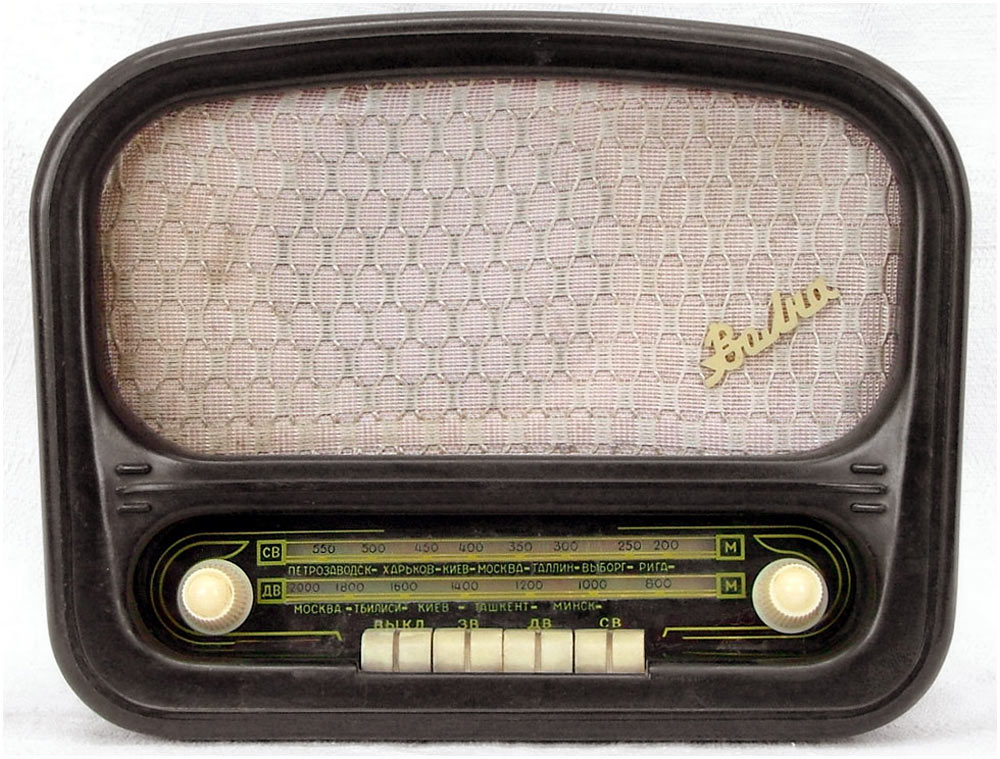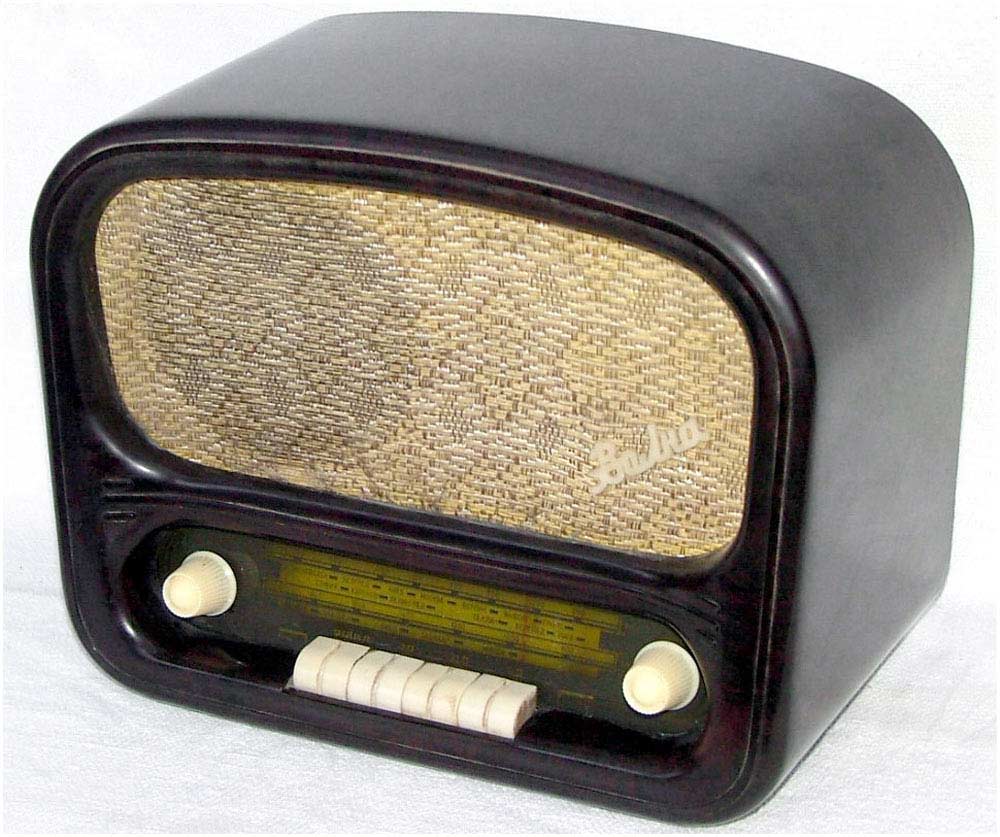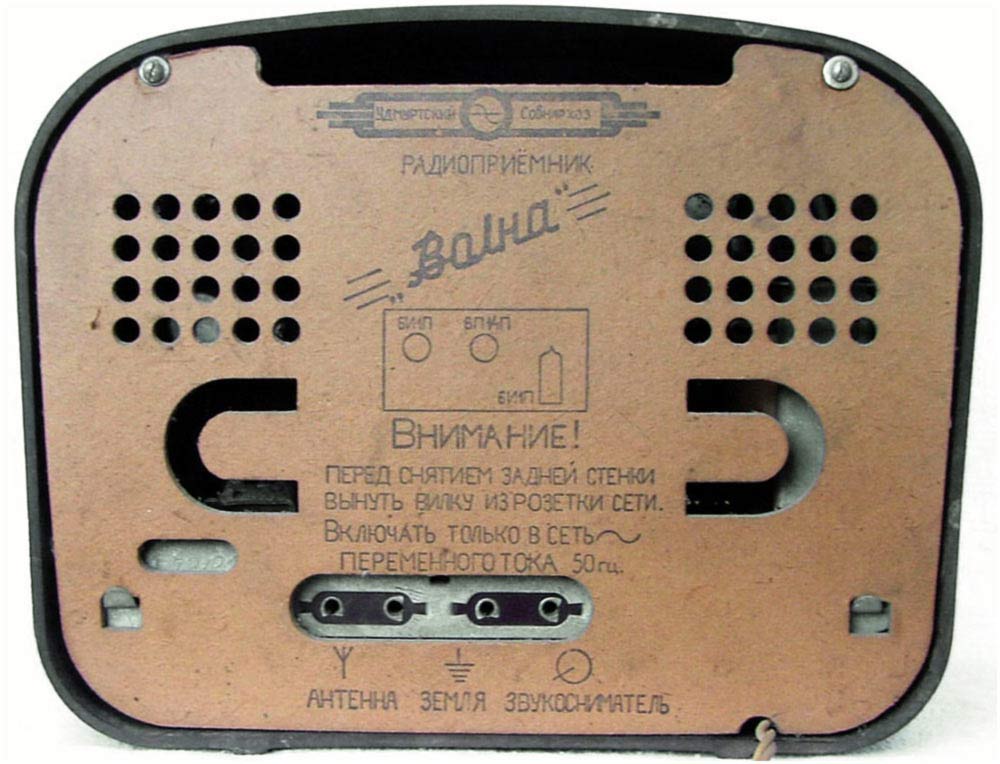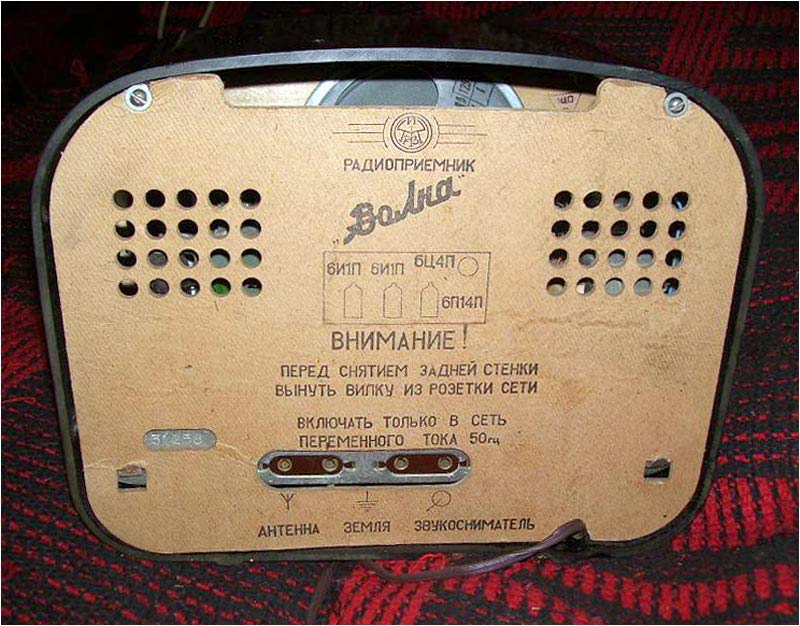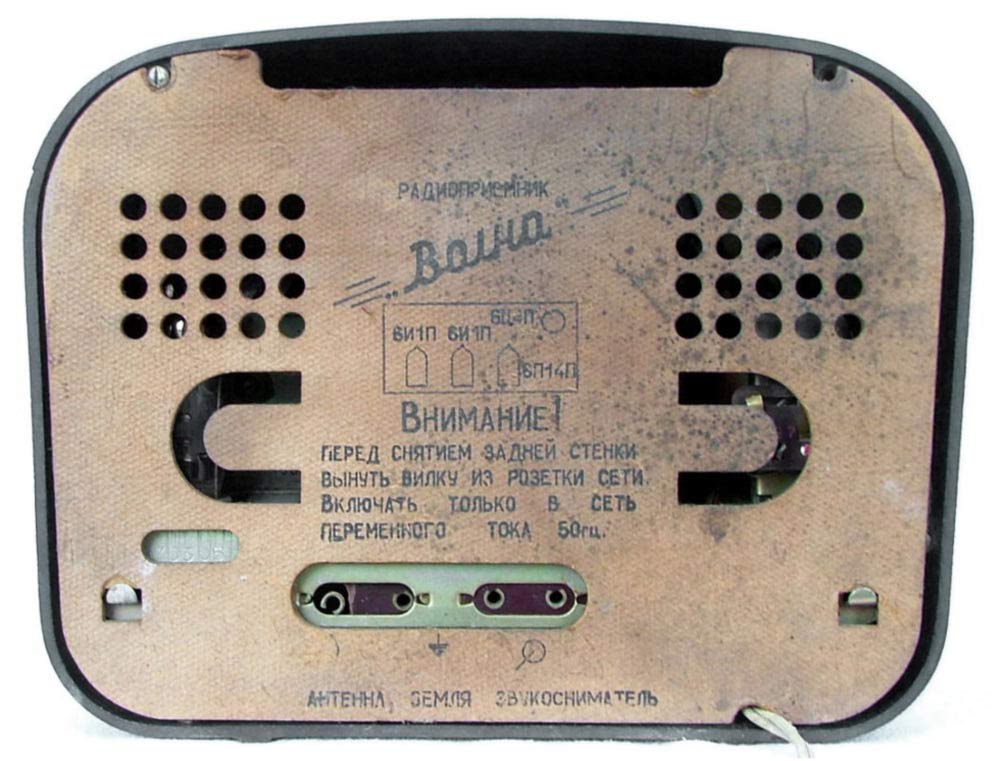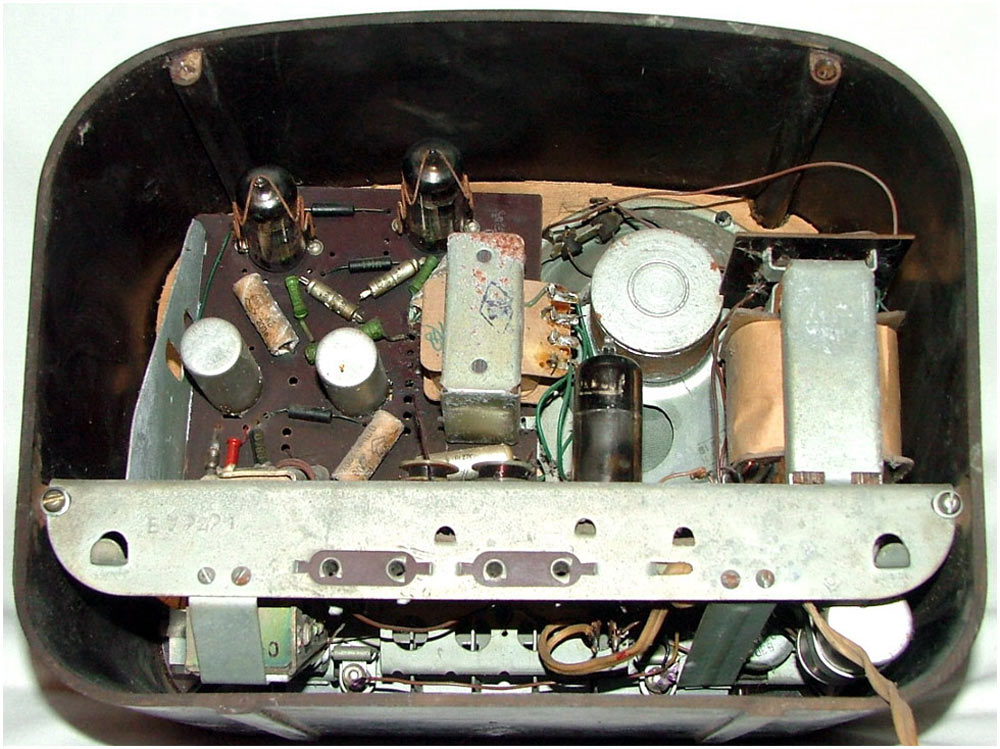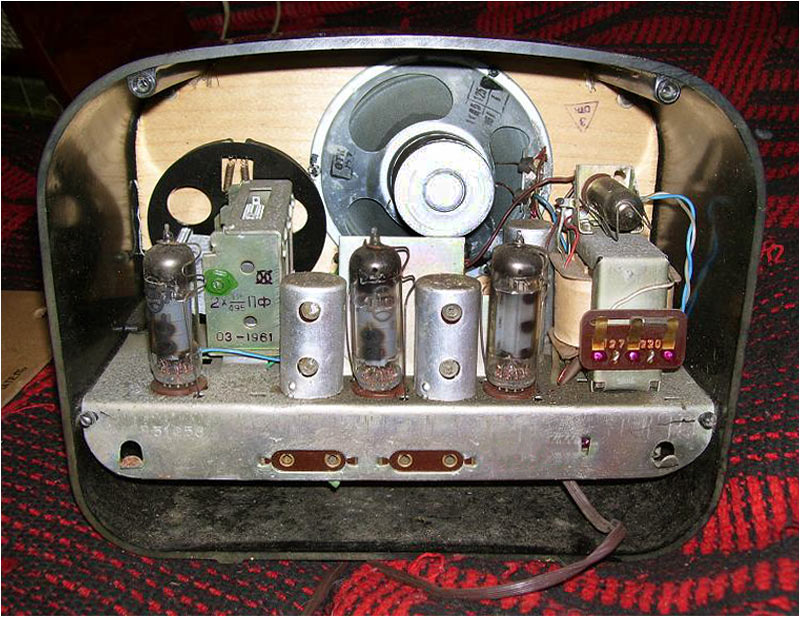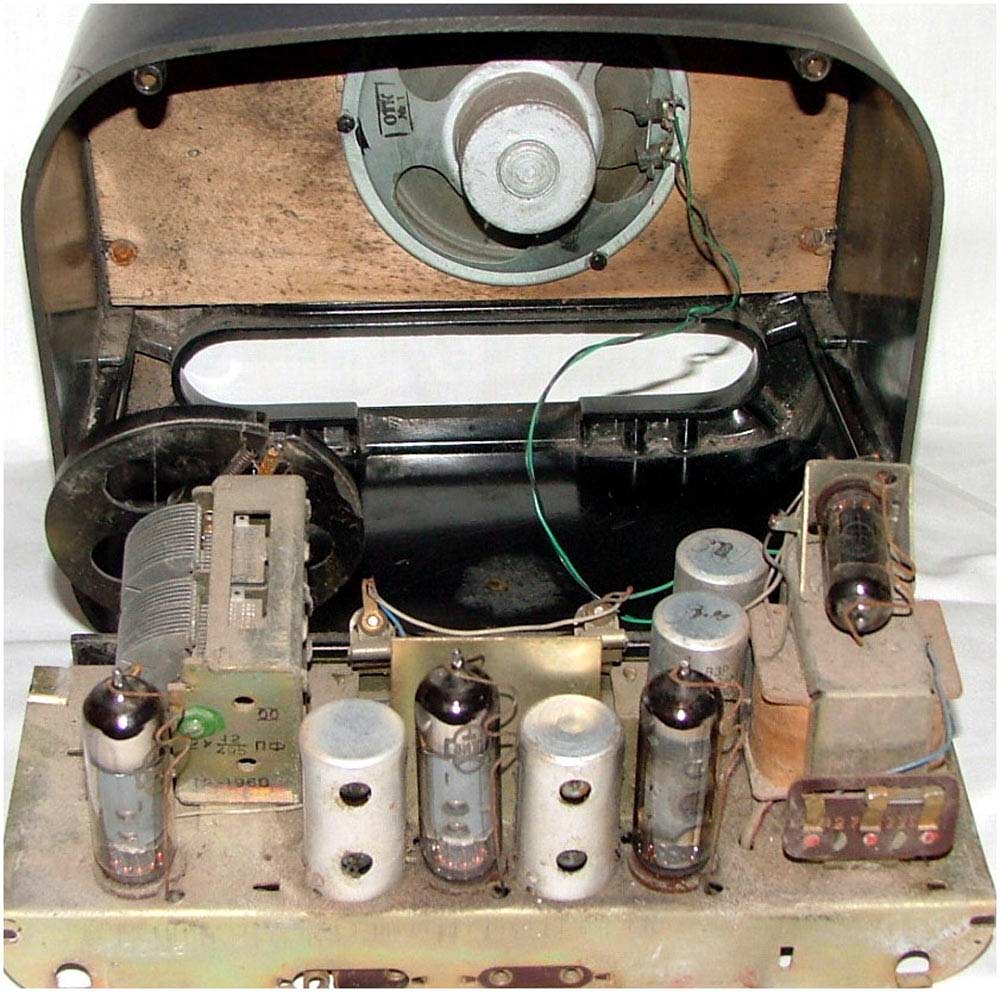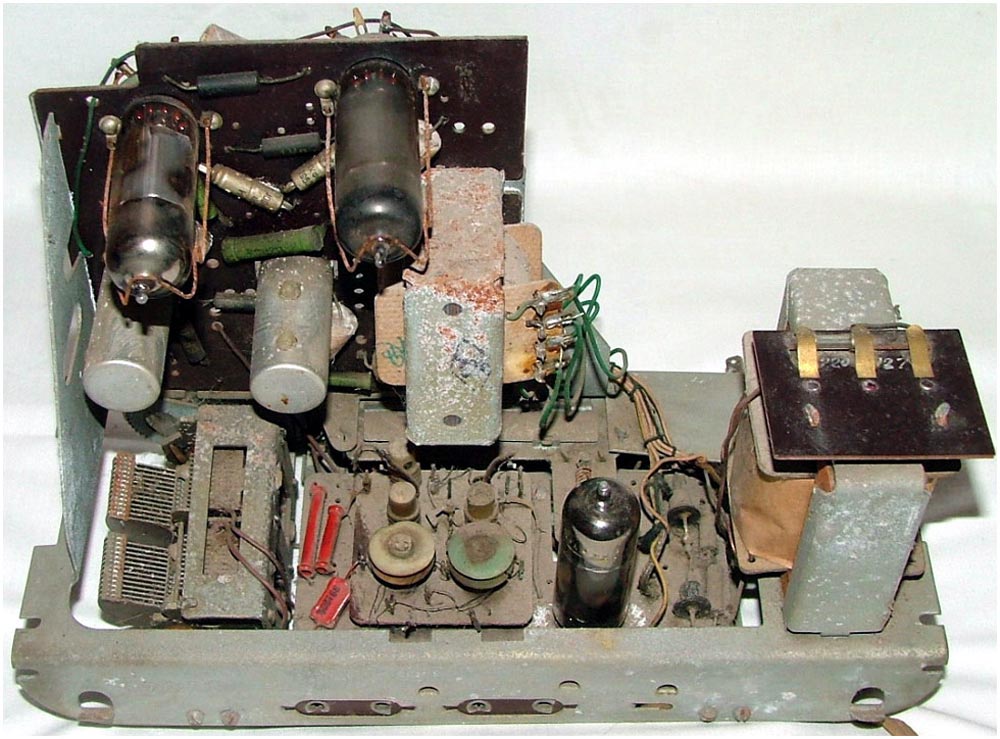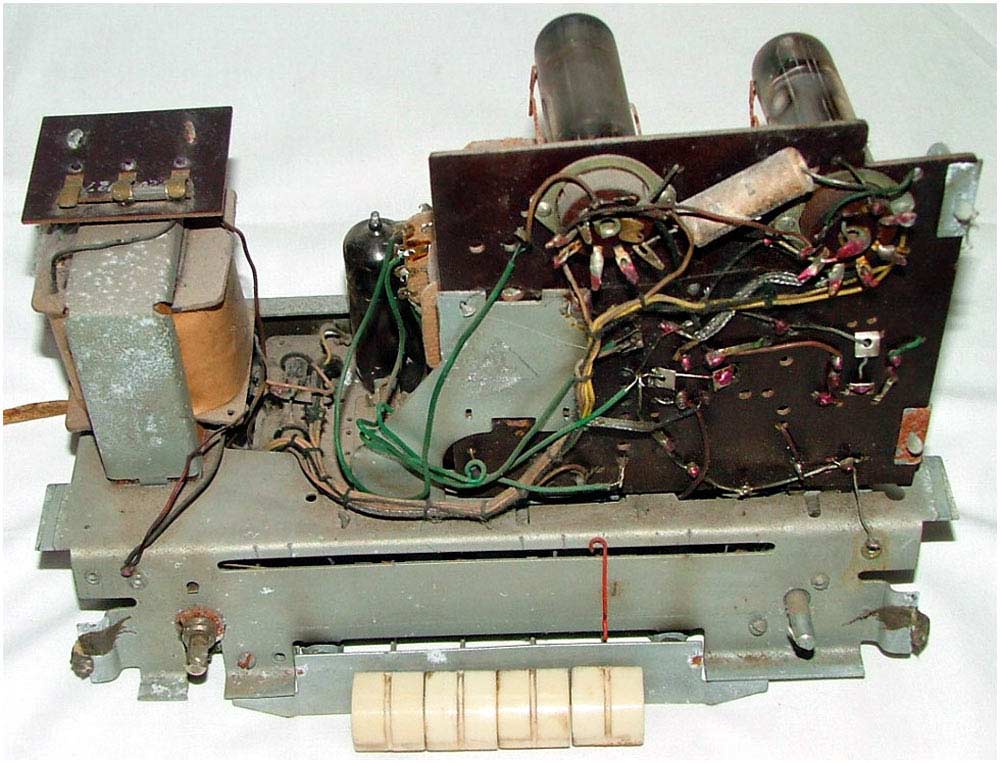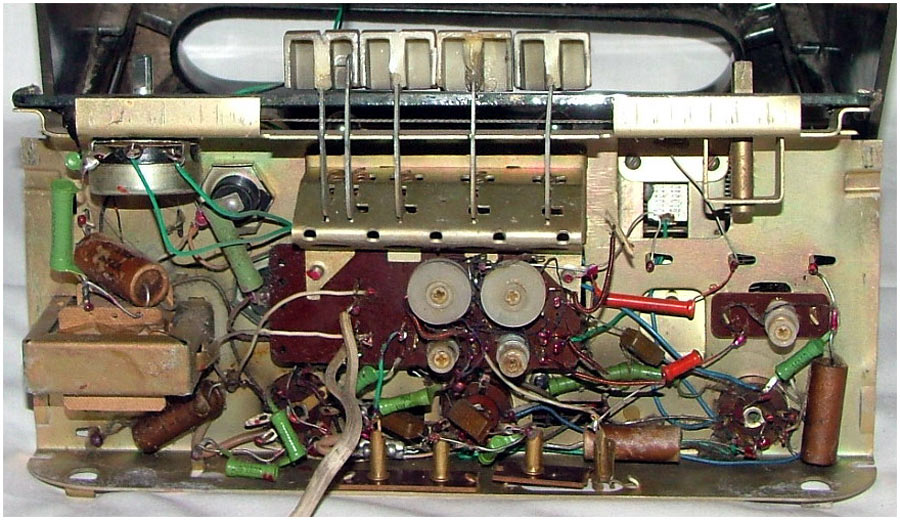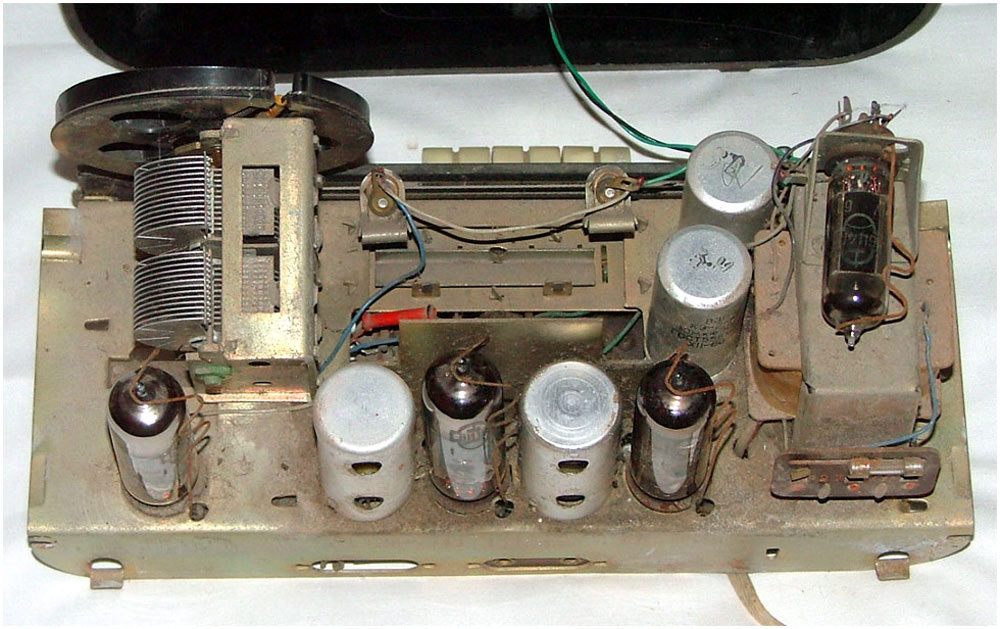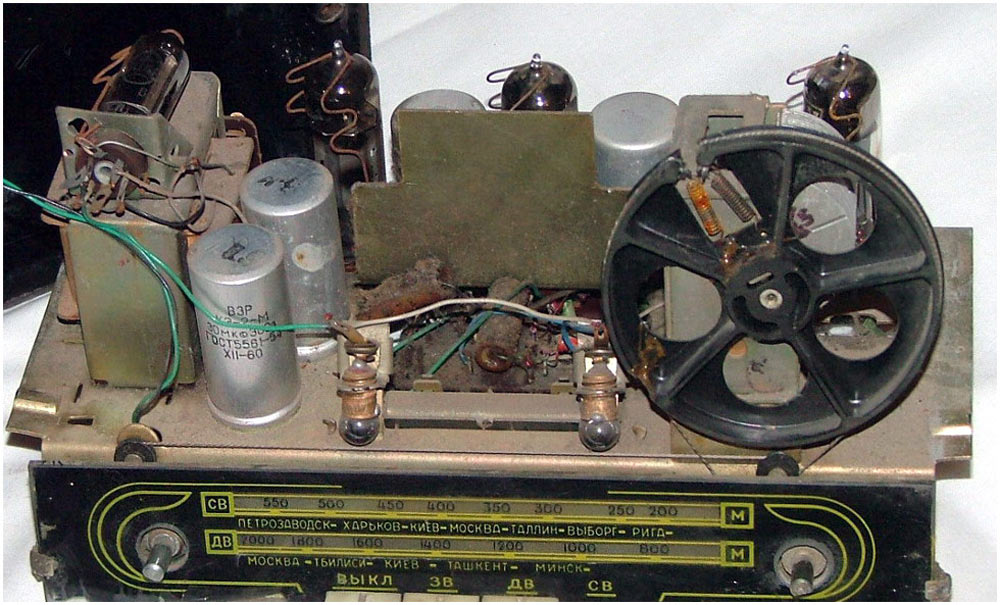Network tube radio receiver '' Volna ''.
Tube radios.DomesticSince 1957, the "Volna" network tube radio receiver has been produced by the Izhevsk Radio Plant. The network dual-band receiver of the 4th class `` Volna '' was released at the end of 1957 in the amount of 50 copies, at the still not completely built radio plant. Since 1958, the receiver has been put into production in two design options: in a case made of wood and plastic, later a version of silumin was added. A small batch of receivers was produced in a wooden case, and a somewhat large batch from the silumin. The most widespread design is in plastic. "Volna" is a three-lamp DV, SV superheterodyne powered from an alternating current network. The sensitivity of the model with an external antenna is 400 μV. Adjacent channel selectivity 18 dB. Rated output power 0.5 W. The range of reproducible frequencies is 120 ... 4000 Hz. Power consumption 30 W. Dimensions and weight of the receiver in a wooden case 320x245x170 mm, weight 5.1 kg. In a plastic case 270x215x145 mm, weight 4.2 kg. The price of the receiver in a plastic case is 28 rubles 75 kopecks, a wooden case is 32 rubles 88 kopecks (1961). In April 1958, at the World Exhibition in Brussels, the plastic version of the Wave receiver was awarded the Grand Prix diploma and a gold medal. The chief designer of the receiver, engineer A.S. Balakshin. In the third quarter of 1958, the radio was upgraded. Its design and electrical circuit were redesigned, in particular, the chassis took a standard form, the loudspeaker was also shifted to the center of the case, the diodes in the rectifier were replaced by a kenotron, the drawing of the scale and decorative fabric was changed, the circuit in denominations and types of radio components used was corrected. On the basis of the modernized receiver, in the fall of 1958, the plant began production of a radio with the name `` Volna ''. In collectors' collections, you can sometimes find a three-lamp Volna radio receiver of the 1st version, released after 1958 or even in 1960, the answer is simple - the plant and related enterprises created a decent stock of chassis and components for the first version of the radio, that's both versions had to be released for a while.